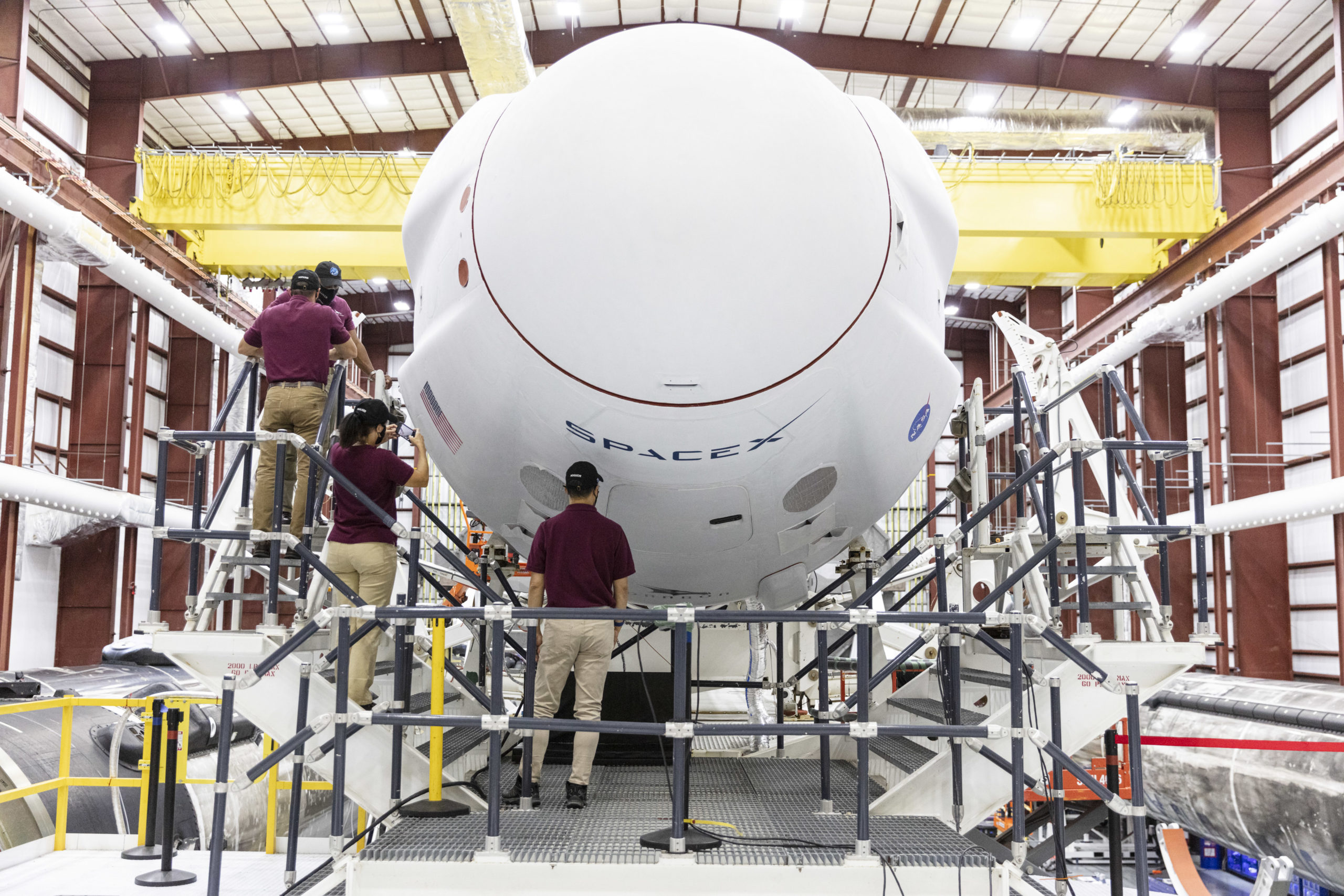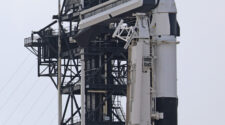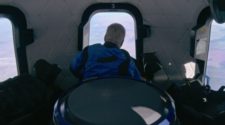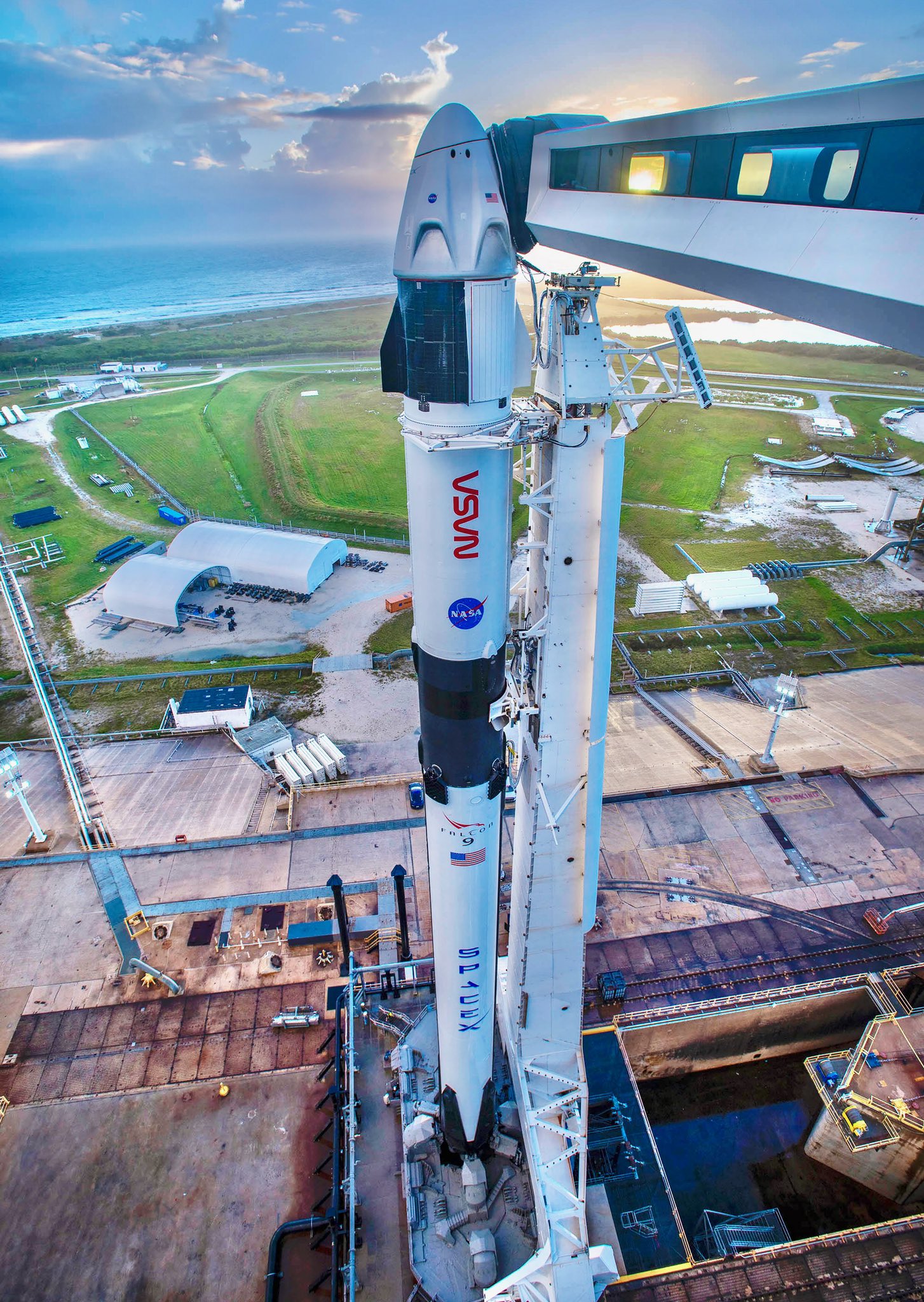
It has been a long road from concept to flight for the Commercial Crew Program (CCP) culminating in the successful launch of the Demo 2 flight which launched May 30, 2020. SpaceX now begins fulfilling its contract with NASA taking astronauts to the International Space Station and returning them home safely with the launch of the Crew-1 mission, currently set to occur on Sunday night, November 15, 2020.
The hardware required to perform these first missions was developed by SpaceX.
The Booster
The Falcon 9 Booster in different configurations will be making its 97th launch when it propels the Crew-1 mission into orbit. The current booster is the 5th different version of the rocket and the most powerful so far outside of the Falcon Heavy which uses three Falcon 9 cores strapped together.
The Falcon 9 Block 5 rocket is a 229-foot-tall reusable booster is fueled with a mixture of Rocket Grade Kerosene (RP-1) and liquid oxygen. It is planned each booster will be able to be flown up to 10 times with minimal refurbishment between launches and possibly up to 100 launches with more in-depth refurbishment. The first stage is powered by 9 Merlin engines generating 1.7 million pounds of thrust at liftoff. The first stage burns for 2 minutes and 38 seconds before Main Engine Cutoff (MECO ).
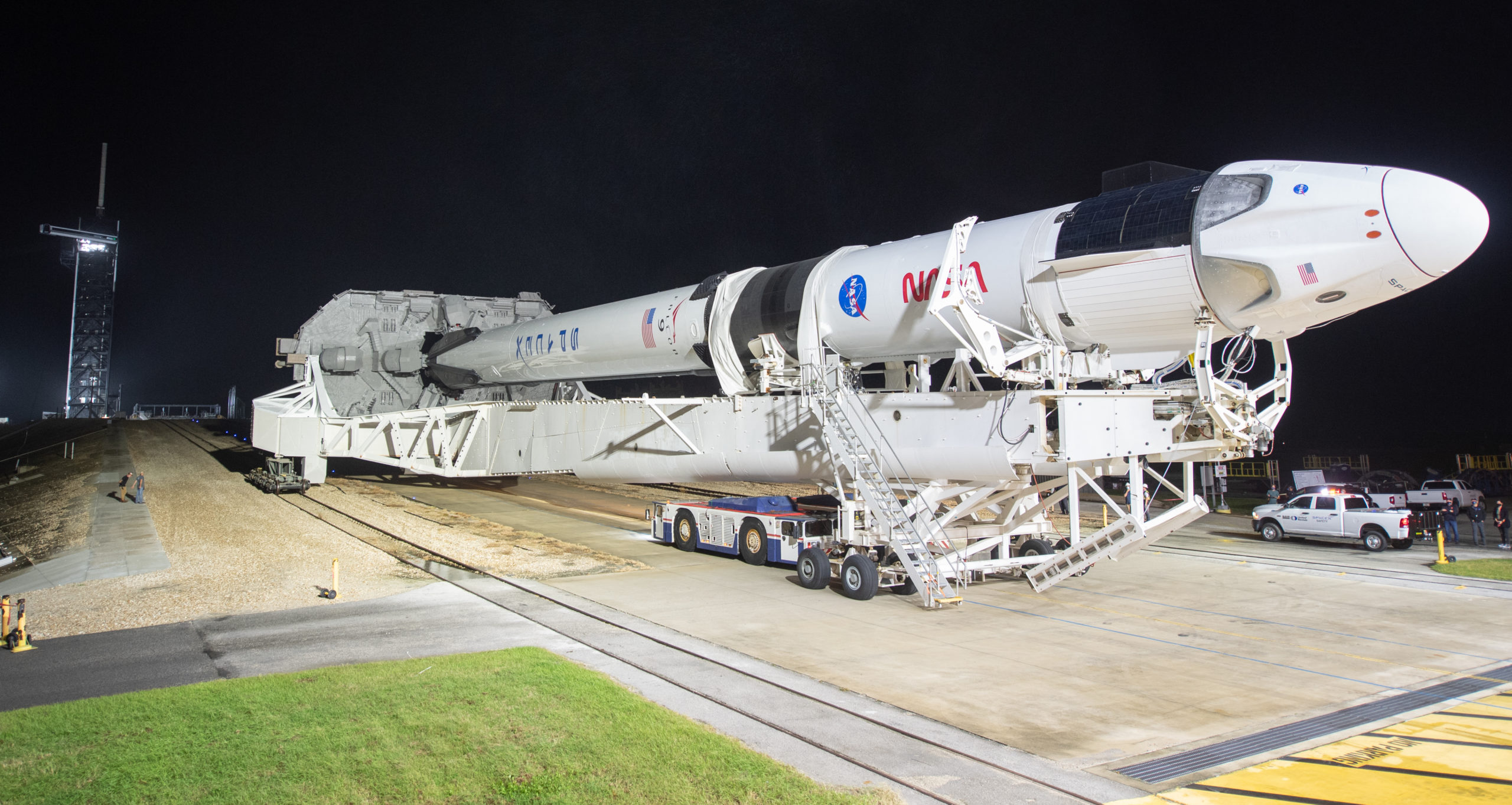
The interstage is the black section you see near the top of the booster. Made of a composite structure, It allows the second stage to be attached to the first stage and contains pneumatic pushers that separate the second stage by pushing it away from the first stage a few seconds after MECO. At the bottom of the interstage are a pair of grid fins that are used to stabilize and orient the rocket during it’s descent back to Earth,
The second stage’s job is to put the capsule into the proper orbit to catch up to the space station. The second stage is powered by a single Merlin Vacuum Engine producing 220,500 pounds of thrust and is capable of firing multiple times depending on mission requirements
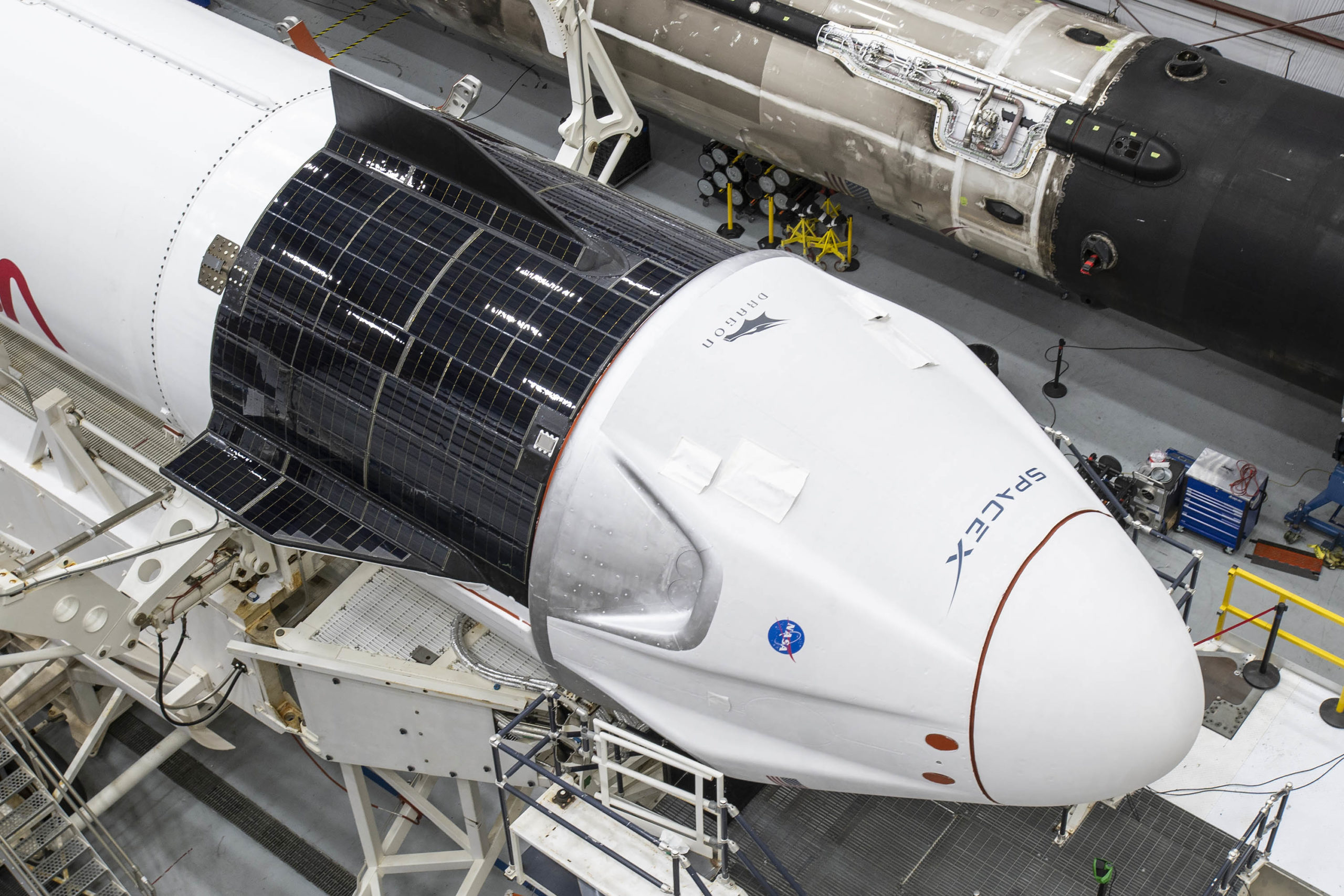
Dragon 2 Crew Capsule
Transporting the 4 person crew will be the crew version of the Dragon 2 capsule. The Dragon 2 will be used both as a dedicated cargo ship and also for crew. The vehicle is partly reusable which should reduce costs. While the previous version of the Dragon capsule flew into space 19 times along with 1 failure to reach orbit due to a booster failure, this will be just the third flight of the Dragon 2 capsule into space.
Dragon 2 has enough supplies on board to fly for up to 10 days in space and is designed to stay attached to the International Space Station for up to 210 days for each mission. The Crew Dragon 2 capsule can hold up to 7 astronauts, however for Crew-1 and any other currently slated ISS trips, NASA is only using 4 seats. Located above the seats are three screens used for monitoring and controlling the ship. While the vehicle flies autonomously, performing everything during flight including docking to the space station, if the need arises the astronauts have full control of the vehicle via these screens. The previous Dragon capsules which were used just for cargo, would maneuver next to the station and then would be grappled by the station’s crew using the station’s CanadaArm and then they would berth it to the ISS docking port.
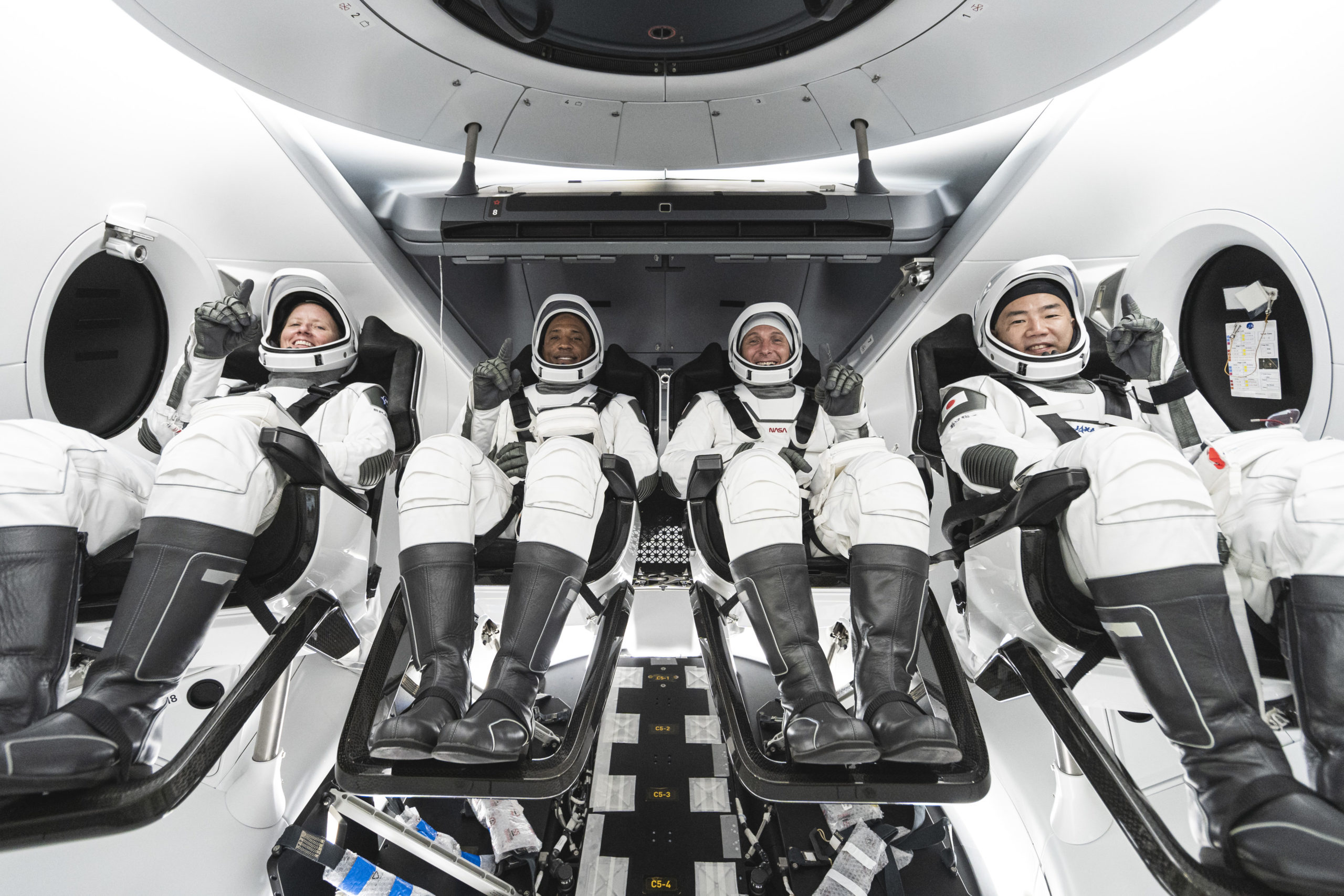
Back inside the Crew capsule you’ll find that located behind the spacecraft’s control screens there is well, a toilet, and also the docking hatch used to move from the capsule into the ISS. The vehicle has Draco thrusters that are used for orbital maneuvering. Crew Dragon capsules had to have the ability to abort from the booster in the event of a catastrophic failure, the vehicle’s SuperDraco engines make up the LAS (Launch Abort System) that propels the capsule away from the booster.
Below the capsule, there is another section that SpaceX refers to as the trunk. The solar panels that power the spacecraft are stored inside the trunk during launch and deployed after reaching orbit. The trunk also has radiators that allow heat to be removed from the spacecraft as well as fins that are used to provide stability in the event of a launch abort. The trunk also provides space for unpressurized cargo. The trunk is discarded during re-entry and it is not recovered.
The capsule being used for the Crew-1 mission is a new capsule, named Resilience, and should be able to be reused for future missions.
